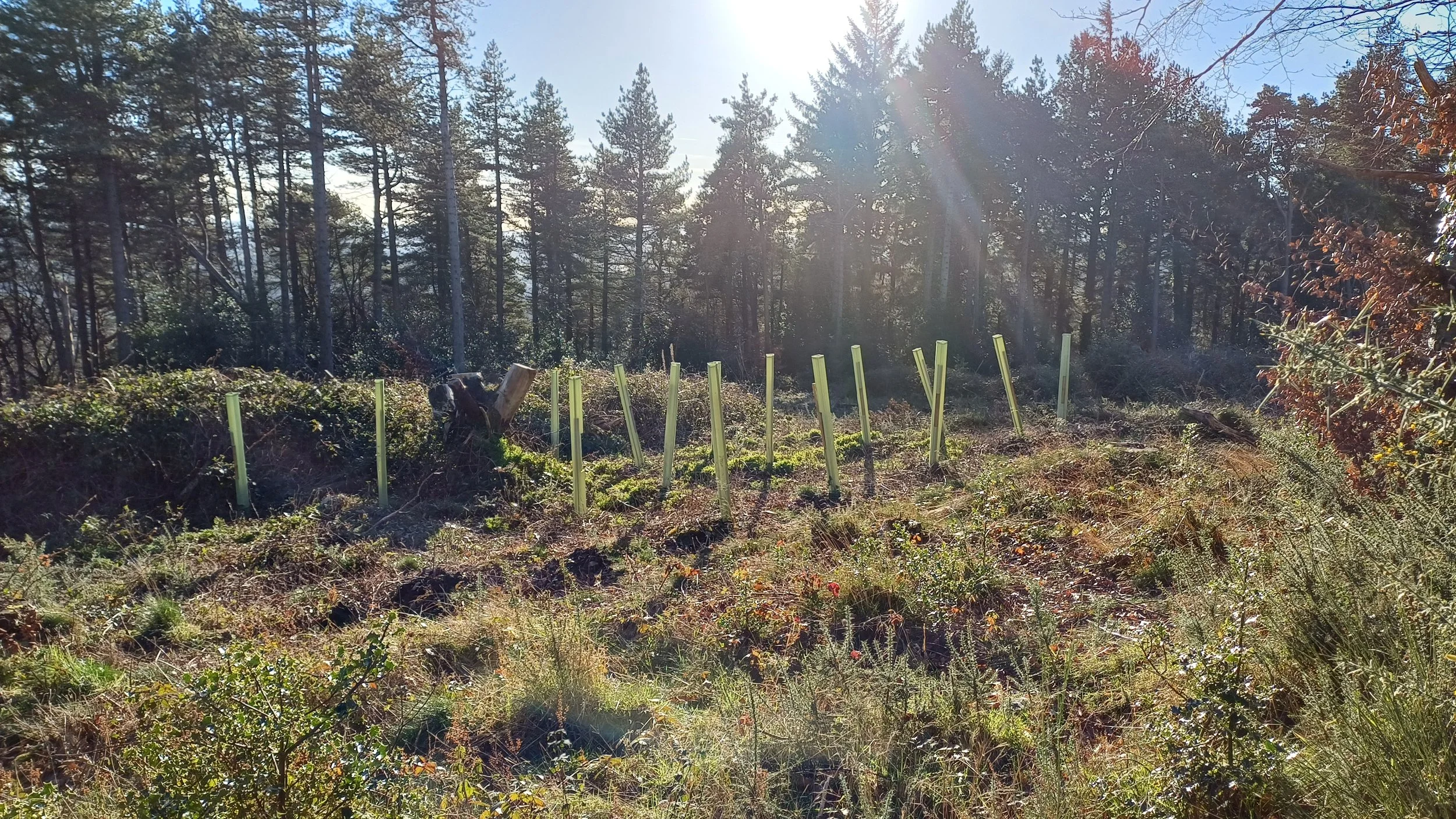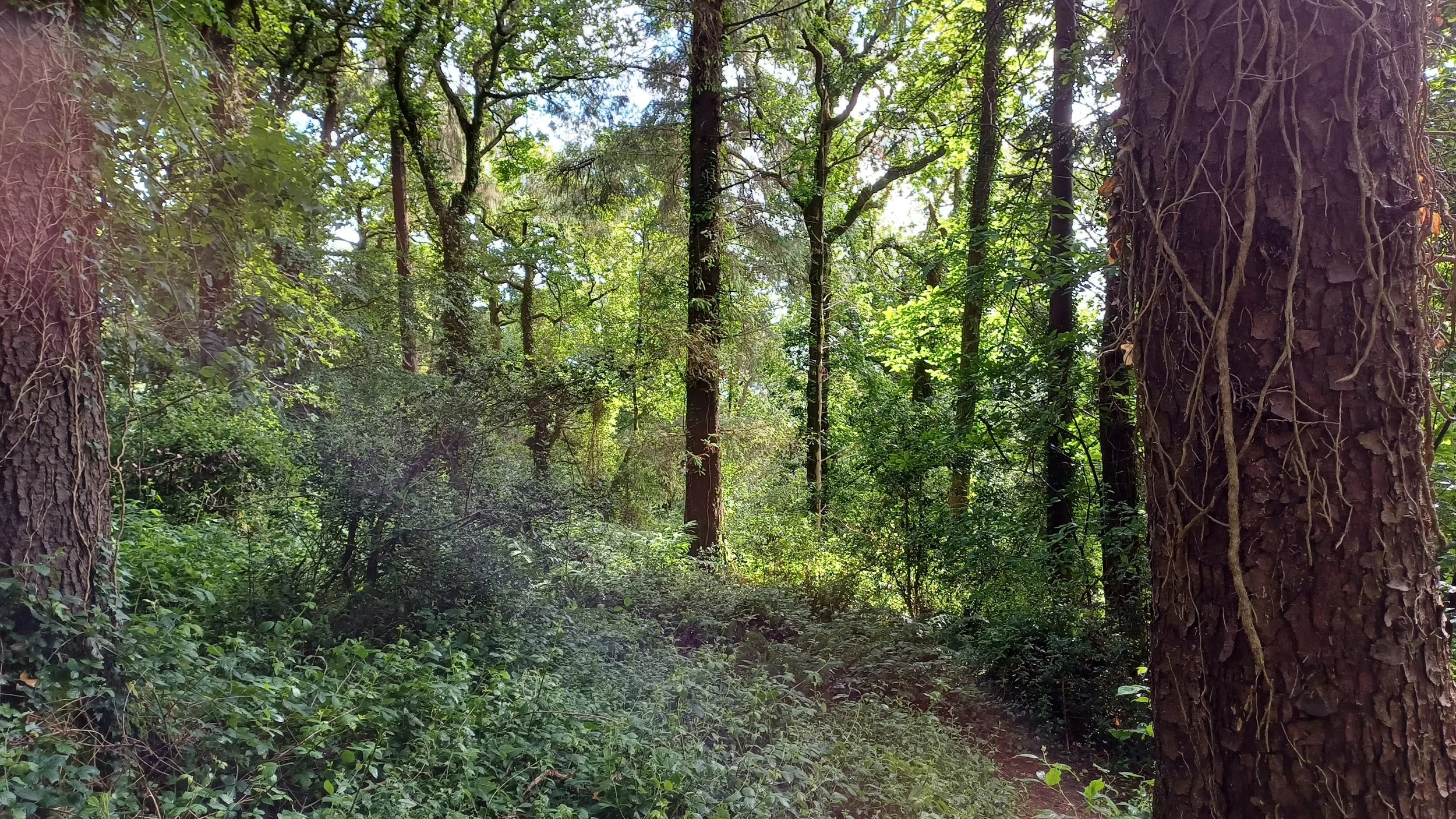Our Proposal to Restore Kindlestown Woods
-
Targeted Planting to Protect Panoramic Vista
The view from the top of Kindlestown Hill is spectacular and includes the Great Sugar Loaf, Little Sugar Loaf, Bray Head, the Irish Sea, Dalkey Island and Dublin Bay.
If non-native fir saplings are left to grow in the North field of Kindlestown, this vista, which is hugely valued by the local community, will disappear.
We propose that only native trees and shrubs, including missing species, are planted strategically in this space (approx. 210x140m) to enhance biodiversity while protecting the unique views.

-
Introduce Missing Native Keystone Species
Many mature fir trees have recently fallen along the Southern side of Kindlestown Hill. This is in part a result of the clear felling nearby which has caused these remaining trees to be increasingly exposed to the wind. Weakened root structures will cause many more will fall in the months ahead.
As a consequence, there is more light in the canopy. We propose that native trees are planted in these pockets with a focus on missing keystone species, hazel and hawthorn. Emerging non-native seedlings including beech and sycamore should be removed.

-
Continuous Management of Young Trees
While several hundred native trees have been planted in protective shelters in groups along the Southern side of Kindlestown Hill, the majority will not survive due to exposed roots, poor ground soil, errors in securing tree guards which themselves are of poor quality.
We propose that these new seedlings are monitored closely and, where needed, replanted using best practice approaches. Involving community groups in this work will be integral to its success.

-
Let Nature Thrive
Unlike most woodlands in Wicklow which are heavily browsed by increasing deer populations, there is a relatively healthy understory areas of native tree cover with many examples of natural regeneration, including of sessile oak.
These areas of rich biodiversity potential need to be left to nature insofar as possible, with changes to the woodland ecology monitored over time. It’s likely that non-native seedlings such as sycamore, beech or spruce will emerge and require removal.

-
Remove and Manage Invasive Species
There are several invasive species within Kindlestown Woods. Presently, these plants, including cherry laurel, himalayan honeysuckle, tree cornered garlic and buddleia, could be managed using hand tools. If left unchecked for much longer however it will become increasingly difficult to control their spread.
We are proposing that these are mapped, and a plan of action is developed to remove and monitor them.

-
Seed Collection and Propagation
There are many mature native trees remaining in Kindlestown Woods most notably in the Southeast section. We are proposing that seeds from these trees are collected and propagated annually with young seedlings carefully grown from seed reintroduced into this wood over time.
Though some natural regeneration is evident there are other areas where nature will need a helping hand. As much as possible it is preferable to plant young trees with the same genealogy as those already present.
